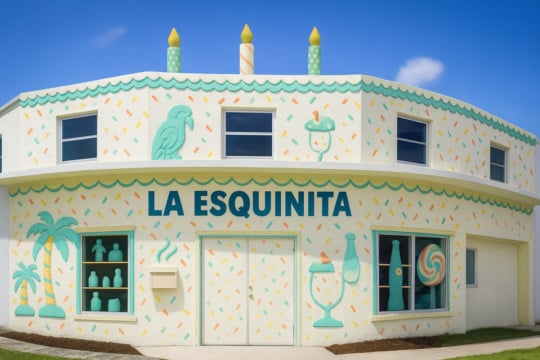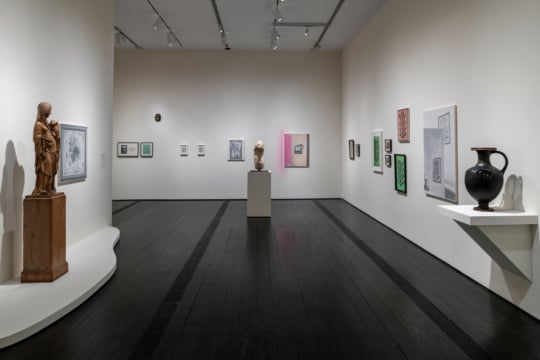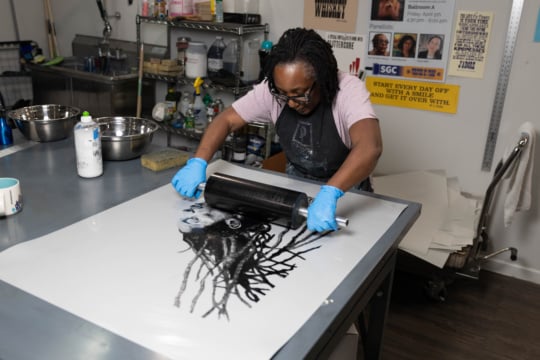
Uniquely American yet universally recognized, the Cowboy archetype has proliferated in media since the dawn of photography. By the late 1800’s, once the West was considered settled, Americans were ready to romanticize the supposed keepers of their new territories. He was someone who fully embodied freedom and independence, made himself one with the land, and lived by a code of honor. Over the next 150 years, the cowboy became synonymous with America and dominated novels, movies, television shows, and music. Working from this vast archive of media, artist Shawn Campbell began to interrogate how fact and fiction molded a flexible persona.
To unbox the cowboy is to examine the nature of propaganda, how its constructed and dispersed. Act III – The Act of Acting, Shawn’s current exhibition at Alabama Contemporary Art Center, utilizes everyday materials like compressed plywood, readymade toys, or clothing, alongside archival images. Some pieces are larger than life and speak to their ubiquitous nature, like a reproduction of Bronco Buster riding atop a giant carton of Marlboros, while other works could be folded up and placed into one’s back pocket, such as a coloring sheet depicting Belle Starr, the “Bandit Queen” of the Wild West. What becomes clear is that this mythos needs more actors, new converts, to sustain the life of the cowboy. Anyone can play the part and it’s as simple as picking up the microphone on a baby blue karaoke machine and belting out Glen Campbell’s “Rhinestone Cowboy”.
Emily Llamazales: So catch me up on your studio. The last time I walked in was nearly four years ago and I described feeling as though I had entered the workshop of a funhouse repair man.
Shawn Campbell: It was kind of funny. Before the show, I couldn’t do anything in there, it was so full. And then after the show it was like a vacuum came through and sucked everything out. It was completely empty because I think I have about 6,000 square feet at the show.
EL: As Alabama Contemporary Art Center has taken on a transient model in 2025, with off-site exhibitions, how did the space for your show come about?
SC: Yeah it was interesting. We got an email probably a year and a half ago from them saying that they had some building renovations coming up and that they’re going to have to close their brick and mortar location for a couple years. I was lined up to be the first person showing this year so we had a couple meetings and I was like, “I still want to do the show. I’d rather not push it back.” And we went through all these different options including having it in another location in Alabama. And I said, “I’d kind of rather do it in Mobile.” Mobile reminds me a lot of Akron, Ohio, where I’m from. Have you ever been to Mobile?
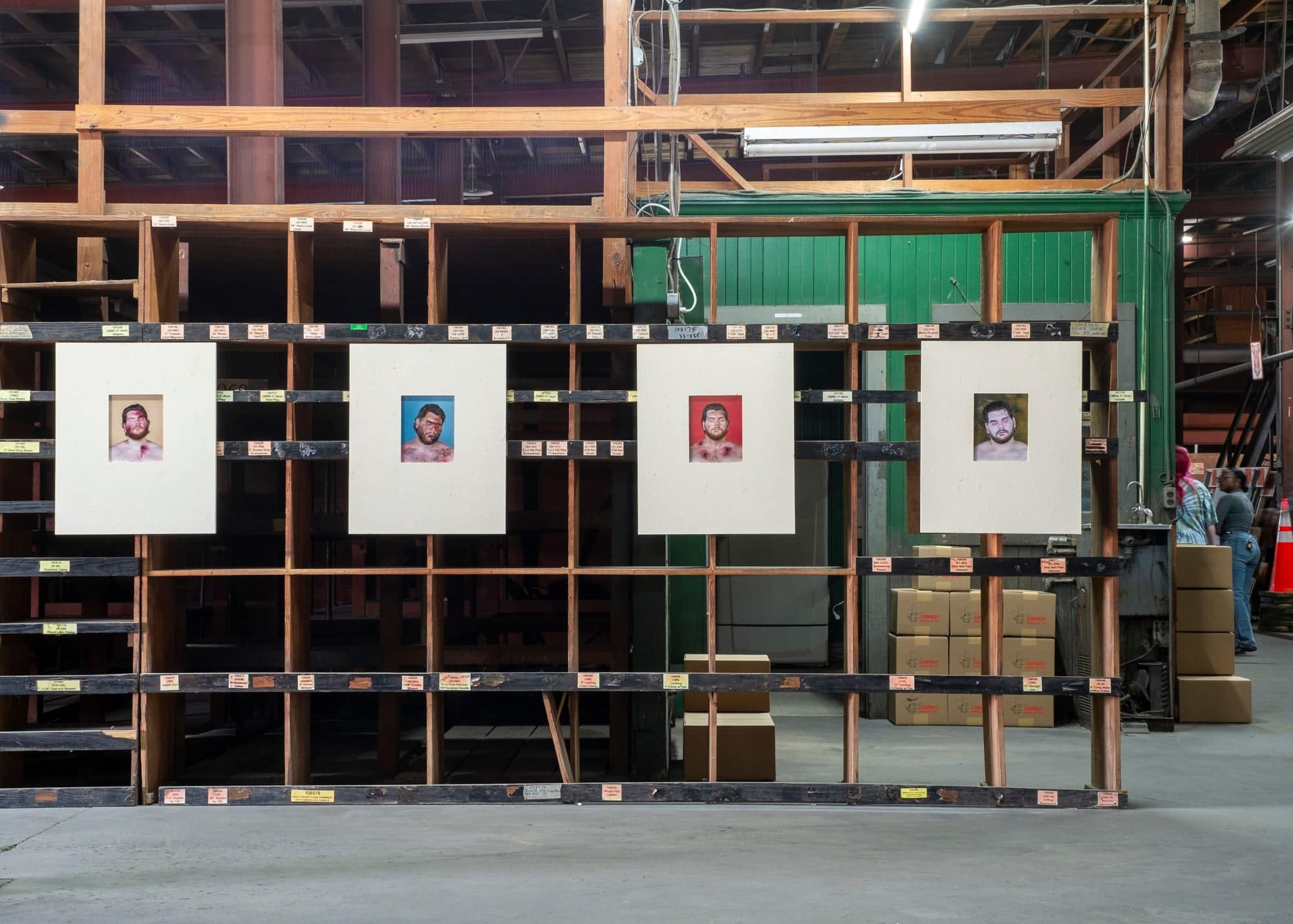
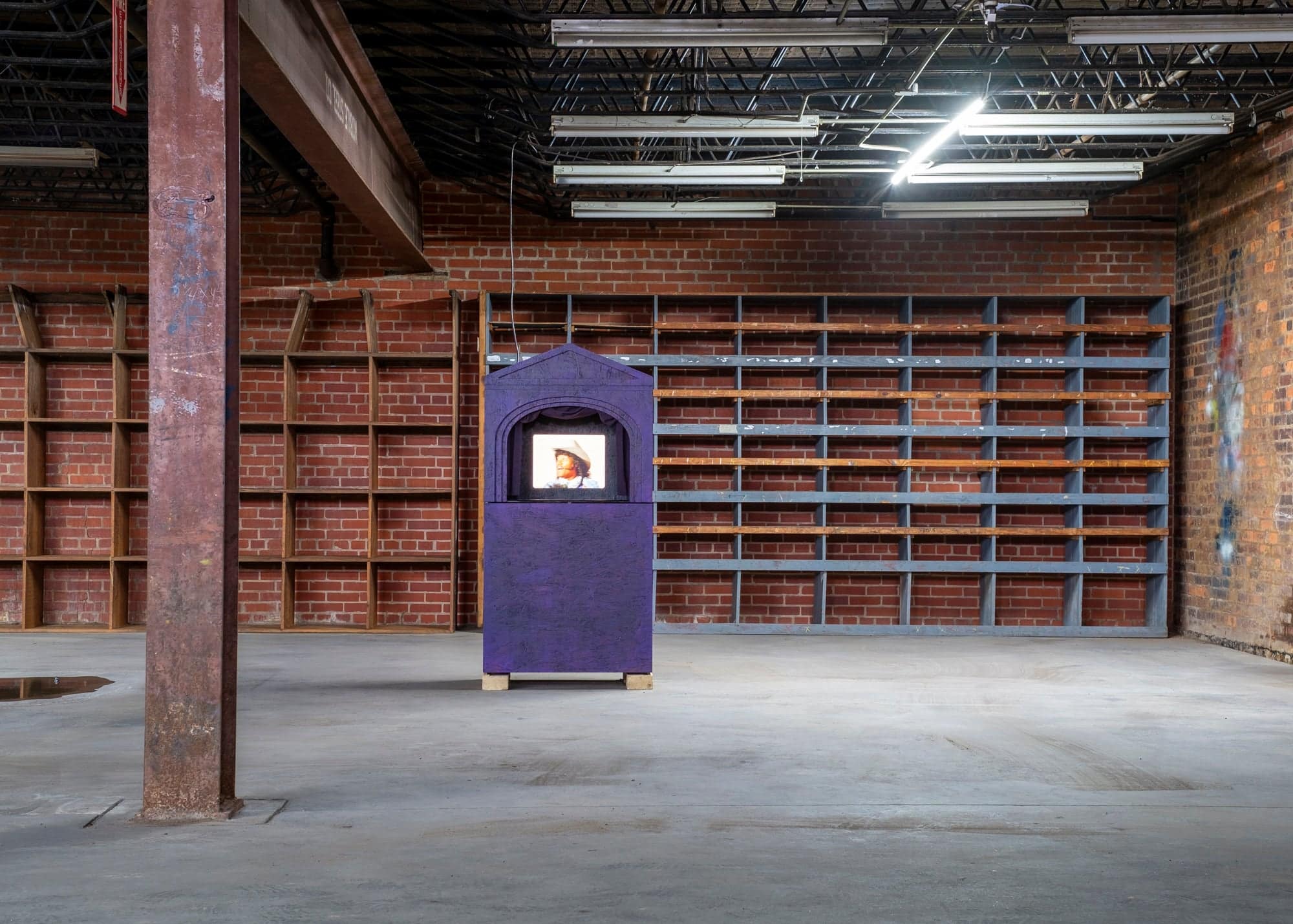
EL: I’ve only driven through it on the way to the beach…
SC: Yeah. It really reminded me of Akron, as this post-industrial place. It has a lot of warehouses which used to be for manufacturing, but now are used as dry storage. I think we ended up looking at four locations and this was the best place: it had power, it had running water. And it ended up being a really cool space. I don’t know if they’re still there, but a portion of it was being rented out by a plumbing company. They were maybe using a tenth of the building and then the rest of it was empty, full of shelves and termite damage.
EL: The show is titled Act III: The Act of Acting. That itself might play into someone picking up information when they walk in and wondering, “how did I get to act three? Where is act one?” You’ve presented Acts I, III, IV and V. But act II is missing.
SC: And I think technically there’s all the way up to seven acts. The reason I broke everything up was because the research is so vast. It was a way to make myself sane by breaking everything up into acts: one for history, another for products, film, music, folk heroes and so on. Act three is centered on acting and theater, or playing the role of the cowboy. All the acts still blend together though, for example in this show I included Annie Oakley action figure boxes made to scale.
EL: Are those based on a real object?
SC: Yeah, they’re based on a real object, but I made them look like they were a Xerox copy. They’re black and white and to the scale of the actual box you would have gone to the toy store for. What’s funny is the work is super pristine, but it doesn’t have to be presented in a pristine environment. That’s the beautiful thing about it. It can work in a white cube gallery, a space without context or meaning brought to it, or it could be in a warehouse like this one—empty but full of meaning because of what the space was once used for. The work is delving into the American dream and its artificiality. In that way, it felt appropriate for it to be in a space once used for blue collar manufacturing, now used to present these weird boxes.

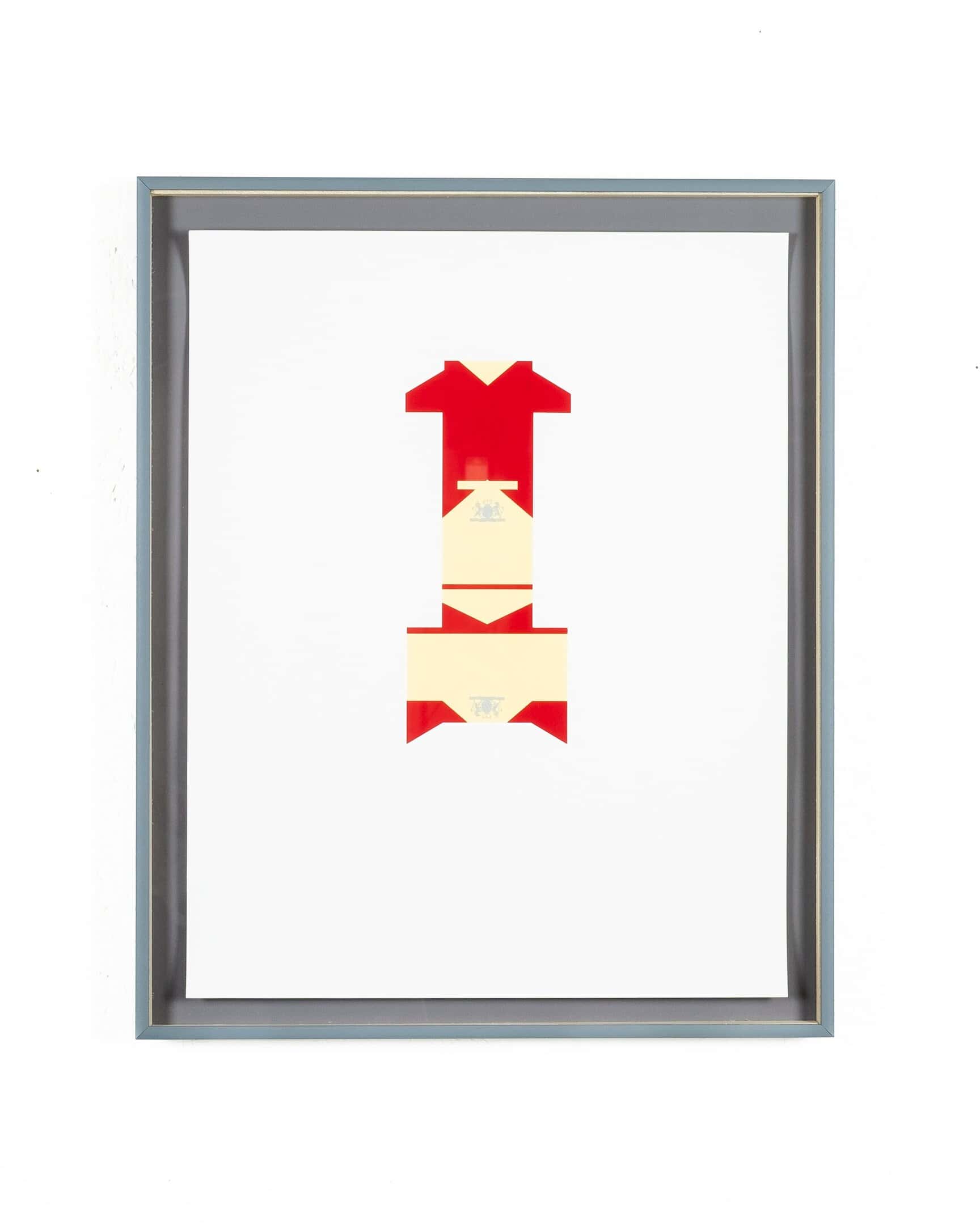
EL: Because of your day job in the prototype industry for consumer products, you’ve developed a knack for making pristine, manufactured art objects like the Cowboy Make-Up Kit, known as Untitled (Shipper) (2024), or a deconstructed cigarette carton, Cowboy Killer (2021). But you also have a background in photography. Can you talk a bit about the photographs and what led you to begin including self-portraiture in this body of work?
SC: What’s funny is I actually did a bunch of self-portraits at the beginning of this work and I just sat on them. I didn’t know what to do with them. I made them while I was in residency at Stove Works. The problem for me is that they’re just too easy. I have this problem with photography where it’s not challenging, but at the same time I’m like, “that’s super! I took this picture and now all I have to do is print it.” That’s just too easy. It’s terrible.
EL: Ha! Maybe it served as an entry point, seeing yourself as a cowboy and the thousand ways to die as a cowboy?
SC: Yeah, the pieces came about because I was interested in the act of acting. What I’ve enjoyed about the myth of the American cowboy is that anyone can put themselves into the shoes of the cowboy; it doesn’t matter where you’re from, race, gender, background, any of that. It’s an individual representation and amalgamation of values that are all different. So I thought, “I have to become the cowboy one way or another.” And on top of that, I don’t think the American cowboy can die. I call this the Xerox effect because every generation has their own representation of the cowboy. They each kind of pluck and pull from the past what they like and then they make a new version. It ebbs and flows through pop culture and right now it’s super popular again. It’s always coming back and it’s always different, like Beyoncé’s version of the cowboy is very similar to the ‘50s rhinestone cowboy.
EL: Definitely.
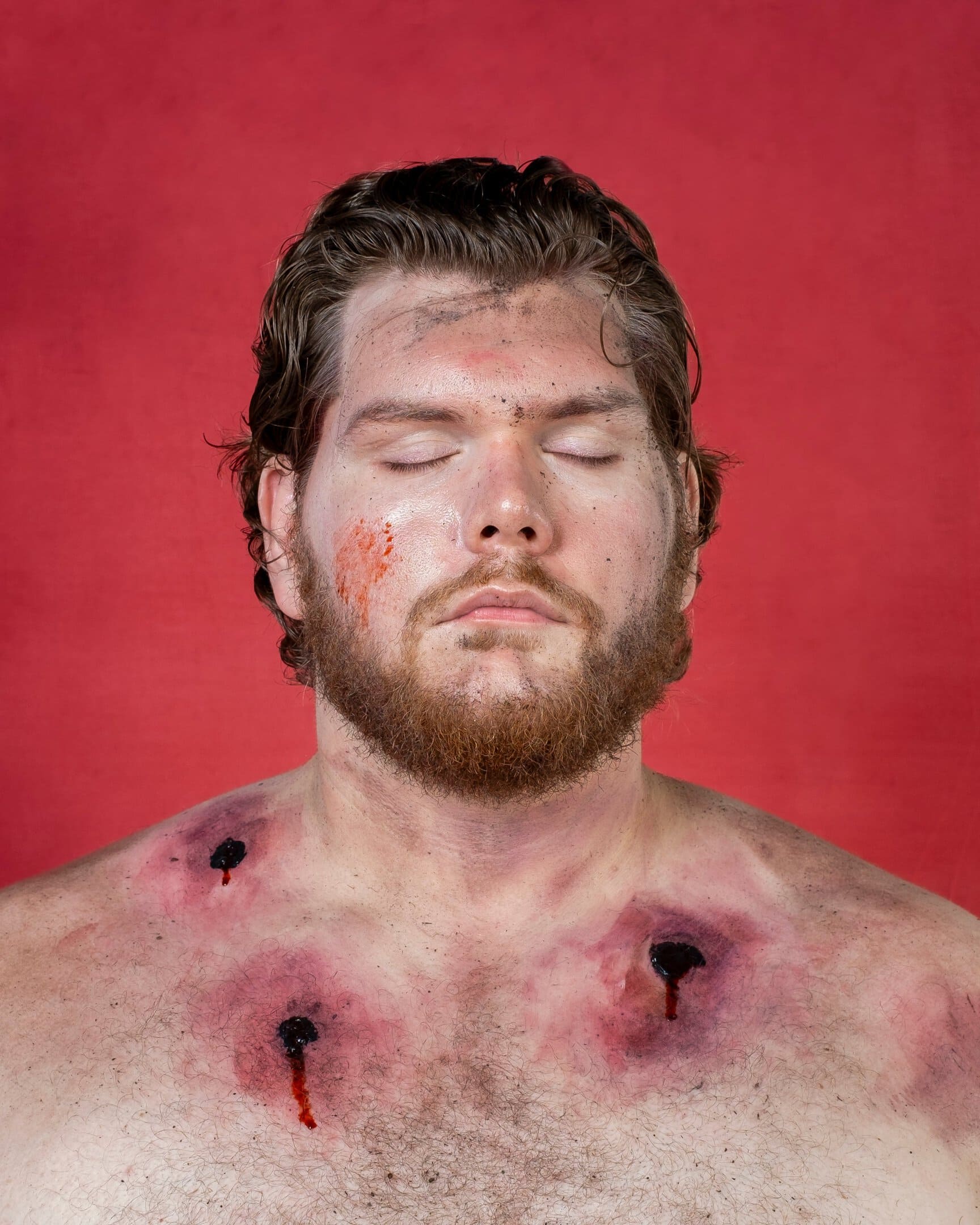
SC: My favorite part is that no cowboy is based in fact. They’re the most inaccurate period pieces you’ll ever experience, so I just don’t think it can die. Because of that I thought it would be funny if I made all these self-portraits as a dead cowboy. The inspiration came from, well do you know what cabinet cards are?
They’re black and white postcards from the 1890s—an early version of collecting cards. You’d buy a photo of the Queen of England or Abraham Lincoln. Frederick Douglas I think was the most documented man at this time. The way they worked was you’d go into a photo studio and they’d give you money to take your picture and then they’d copy the photo and sell it. They can be fun to look at but there’s a large series of very problematic cabinet cards. They’d take pictures of dead outlaws or lynchings and then sell those as collectibles too. Each one shot in the traditional headshot format, an 8 x 10 portrait. I came across all these dead outlaw cards including Jesse James and what was peculiar to me about them was they would sometimes take the time to pose the body for the photograph by hanging guns around them or placing a cowboy hat on them. In some of them they’d dress up the body and in others they’d just be literally laying on the ground, but by staging them in this way, they created a narrative for each outlaw and thereby created a more distinct image for the cabinet card. I’ve collected enough that I have a folder of them now.
I also thought about Catherine Opie.
EL: Mhm. Yeah.
SC: She did a series of photographs where she and her friends, being queer and or butch, took on different appearances of masculinity. It’s funny I don’t have any markers of being a cowboy in any of the photos. I don’t have a hat on or anything like that. It’s all in the title. And they’re not big. They’re 8 x 10 prints, so you can get up into them. With some of them I think you can tell they’re not real, but they’re pretty gory. I learned a lot about makeup and what not to do in my process of making this.
EL: Tell me about the deck of cards you’re working on.
SC: So they’re going to be part of a poker set. When I get bored, I comb through my archive for images I can isolate and make into digital prints or illustrations. I went through hundreds of these and started assigning card values to them. Movie stars became the Kings and Queens in the deck and so on. There’s going to be poker chips and other figurines from around my studio included in the kit as well.
EL: Are you planning to keep going with Western Theater, this overall body of work?
SC: I actually think this is the end of the road for the Cowboy. I’m sure Cowboys will show up a little bit here and there, but this body of work I believe is done. I think it’s been five years and I learned a lot.
EL: Have you found a new archive or…?
SC: I think I have, but I’m not going to say what it is. I am exploring it right now.
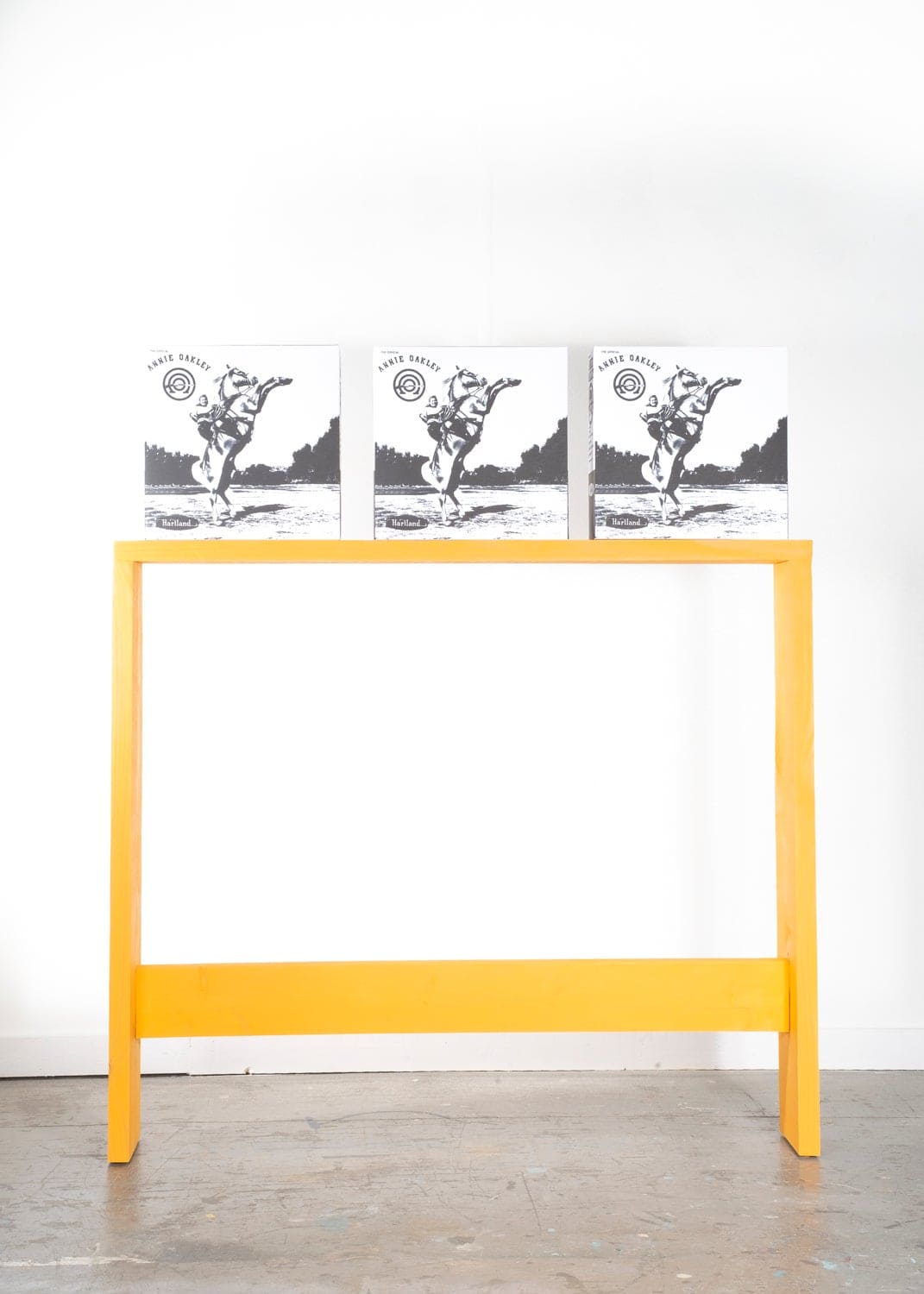
“What I’ve enjoyed about the myth of the American cowboy is that anyone can put themselves into the shoes of the cowboy; it doesn’t matter where you’re from, race, gender, background, any of that.”
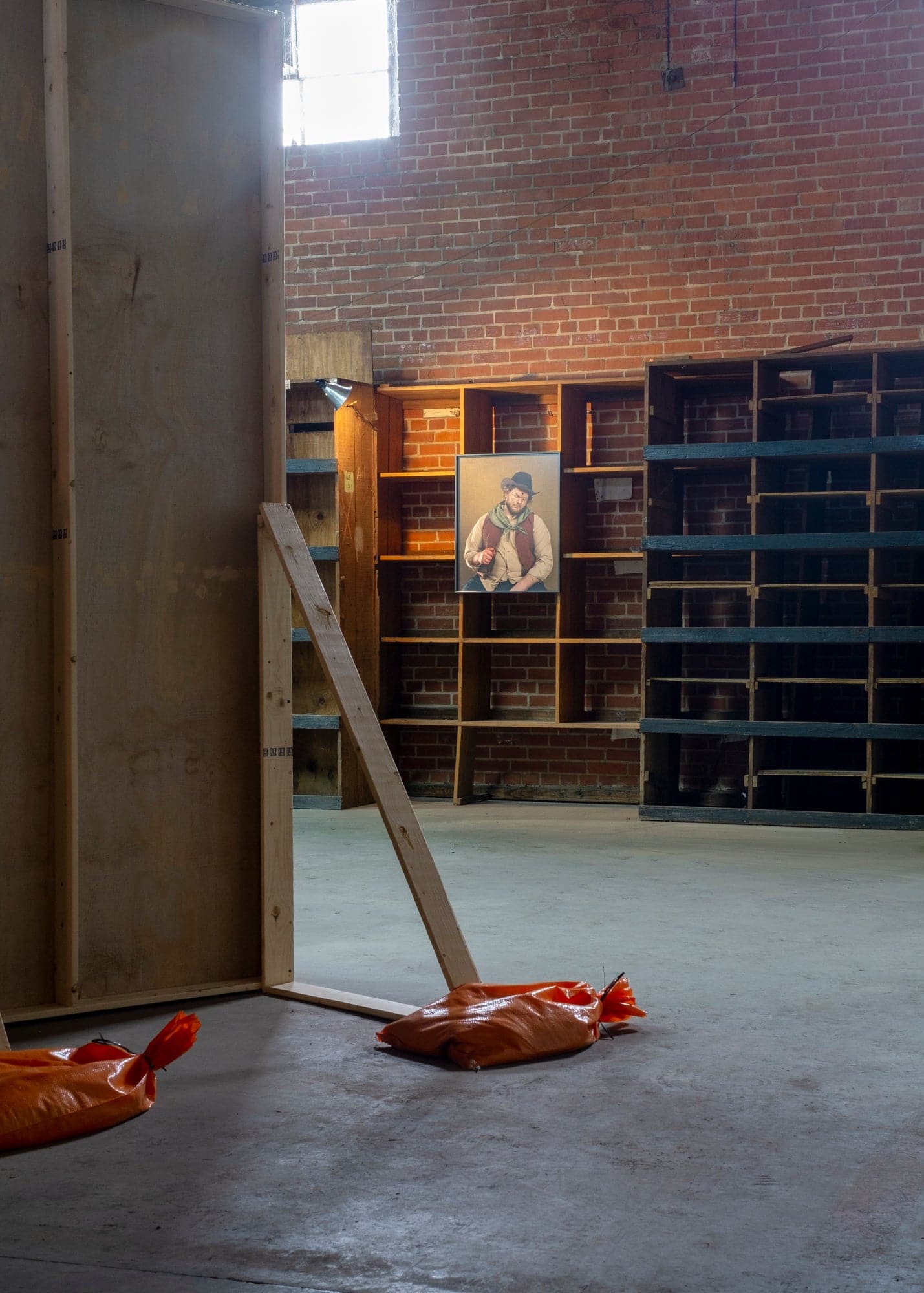
Burnaway is excited to announce Burnaway Artist Editions, a short-run of art objects created by artists from the South and the Caribbean and intended for a broad scope of discerning collectors.
For our first Artist Edition, Shawn Campbell has created Wrangle, a cowboy poker set complete with a deck of cards, wooden poker chips, cowboy figurines, and more.

